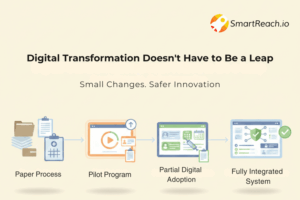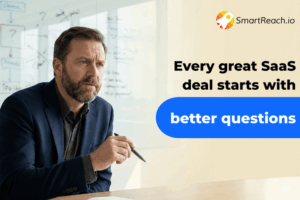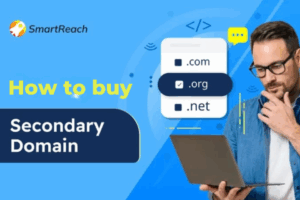Why Long Free Trials Fail to Convert Customers?
Have you ever given customers a free trial of your product only to see most of them never come back? You’re not alone. Many SaaS and online businesses struggle to turn trial users into paying customers.
The long trial period doesn’t automatically mean more conversions. In fact, it can sometimes hurt them. When people have too much time, they may lose interest or forget to explore a product fully.
The average free-trial-to-paid conversion rate is just around 25% for SaaS companies. That means three out of four people never upgrade after trying your product.
So, how do you design a trial that actually helps people see value quickly and leads them to buy?
In this article, we’ll break down the full journey with practical and easy-to-apply tips at every step.
Understanding the Dynamics of Long Trial Periods
When you give someone access to your product or service for a lengthy period, say 30, 60, or even 90 days, you’re playing a long game.
But what many businesses overlook is how that time is used by the prospects.
Consider a startup that offered a generous 90-day trial of their project management platform, expecting users to fall in love slowly. What happened instead was users signed up, did the initial setup, then faded into “I’ll get to it later” mode. By the time day 90 came around, most had no energy left to convert.
The length of a trial gives opportunity, but only if you manage engagement, use the time intentionally, and build a sense of progress. Longer-than‐necessary trials lead to lower urgency and increase drop-off.
Why length matters?
- A longer trial may feel generous, but it can dilute the sense of urgency. Users think “I’ll check it later”.
- It gives more time for friction to show up if onboarding is weak. Issues drag on.
- Decision-makers need to see value quickly. According to benchmark data for B2B SaaS, conversion from trial to paid sits between 15% to 30%. Therefore, stay connected through emails with B2B prospects using automated engagement sequences.
- On the flip side, a short but well-structured trial can persuade prospects to engage, extract value fast, and decide confidently.
Key action
Instead of odd lengths (e.g., 60 days), map a typical buyer’s ‘aha moment’, when they first see value. If your new users typically “get” it in 7 to 14 days, why drag it out to 90? Use the trial duration as a strategic variable, not just a generous gesture.
Setting the Stage: Building a Strategic Trial Framework
Consider your trial period as a guided experience and not merely free access. The goal isn’t to let users explore whenever they want, but to lead them through a path that shows real value before the trial ends.
Let’s say you run a platform that helps businesses find the best tools for hiring. When someone signs up for your 30-day trial, you wouldn’t just drop them into a blank dashboard.
Instead, you’d show them a clear journey: maybe start by helping them post their first job, then guide them to filter candidates, and finally show analytics on which channel brought the most qualified applicants. Each small success builds trust and momentum toward conversion.
That’s what a good trial framework does. It creates a structured flow of wins. When people see results in the first few days, they’re much more likely to stick around and pay later.
A strong trial framework usually covers the following:
Define what success looks like early. What’s the one action that helps users see the core value of your product? For a hiring platform, it could be “post your first job.” For a design tool, maybe it’s “publish your first project.” For a sales engagement platform like SmartReach.io, it’s “send your first personalized cold email sequence.”
Build milestones that create urgency. Instead of giving 30 open days, turn them into mini-goals like Day 3 setup, Day 7 result, Day 14 report. SmartReach applies this exact framework to its own trial users, breaking the 14-day trial into clear activation milestones so users experience value faster.
Personalize the experience. Use data from sign-up forms to adjust onboarding content. A recruiter and a small business owner might need different guidance. Similarly, a sales rep reaching out to enterprise clients needs different email templates than someone targeting SMBs.
Connect the dots across teams. Your marketing, customer success, and product teams should share the same goal: helping users reach that “aha” moment as fast as possible.
When you design your trial like a story with a beginning, middle, and clear payoff, users don’t feel like they’re testing software. They feel like they’re achieving progress. And that feeling of progress is what converts curiosity into commitment.
Maintaining Engagement and Momentum During the Trial
Once a user signs up for your trial, the clock starts ticking. The first few days decide everything. If they don’t see value during these days, they’ll mentally check out long before the trial ends. So, how do you keep their excitement alive and guide them toward that “this is worth paying for” moment?
The answer lies in active engagement. Your trial users are your guests at an event you’re hosting. If you just open the door and walk away, they’ll leave early. But if you guide them, introduce them to key experiences, and make them see the progress, they’ll stick till the end.
Consider offering a website traffic checker tool to users as a free trial. On day one, users might just see a blank dashboard. But if you immediately show them a quick report like “You received 2,300 visits last week, and 65% came from organic search,” that’s instant value.
Then, a few days later, you could send an email saying, “Notice a drop in traffic from social? Here’s how to fix it.” In fact, many modern teams now use ChatGPT traffic analysis as part of their monthly review process to understand shifts in user behavior and content performance. Suddenly, users feel guided, informed, and supported.
That’s how you maintain momentum. Every touchpoint should make users think, “I’m learning something new each time I log in.”
For example, SmartReach.io helps sales teams maintain this exact momentum during their own prospect trials. When a potential customer signs up, SmartReach automatically triggers a sequence of value-driven touchpoints, day 1 onboarding email, day 3 feature highlight, day 7 success story, ensuring no trial user slips through the cracks. This same framework can be applied to your own trial engagement strategy.
Here are a few ways to make that happen naturally:
Celebrate small wins. When a user completes a key action, acknowledge it: “Nice work! You’ve just unlocked your first insights.”
Send timely nudges. Use behavior data to send reminders or tips. If someone hasn’t logged in for three days, offer a quick success checklist. Tools like SmartReach automate this process by tracking user activity and triggering re-engagement emails when trial users go dormant, helping you recover 20-30% of inactive trials that would otherwise churn.
Add human touchpoints. Even one short check-in call during the trial can make users feel valued and build trust.
Highlight results, not features. Keep reminding users what they’ve achieved, not just what they can do next.
Converting the Trial to a Sale
Your efforts shine when trial customers turn into paying customers. Here’s how to achieve that milestone:
1. Make the conversion offer timely and value-driven
Don’t wait until the very end of a trial. If your trial roadmap was 30 days, send an upgrade offer in email around day 20 saying: “Here’s what you unlock in the paid version: 5 extra seats, advanced analytics, priority support.”
Remind them of the progress they’ve made: “You’ve just captured 450 leads. Imagine what the next 30 days look like.”
2. Handle objections proactively
Leads often hesitate because of cost, risk, or complexity. Use your trial period insights: “You’ve connected one data source. Imagine when you connect five.” Tailor messaging based on what they’ve done.
3. Offer flexible payment or plan options
If someone isn’t sure, give them a starter paid tier at a lower price, or a month-to-month plan rather than an annual one. The less friction at “yes,” the better.
4. Social proof & urgency
If your loyal users use your product and see results, highlight that. Example: “Company Y increased hires by 30% in 60 days using the same platform.” Add a deadline: “Upgrade before your trial ends to lock in this price.”
5. Close the loop with handoff
Once they upgrade, immediately make them feel part of the paying community. Send a welcome call, upgrade tour, and onboarding for paid features. For example, SmartReach’s post-upgrade sequence includes a dedicated onboarding specialist, a library of advanced playbooks, and priority access to new features, reinforcing the buyer’s decision and reducing early-stage churn by 40%.
This reinforces their decision and lowers early churn.
Tools, Techniques, and Team Coordination
Behind every successful trial-to-sale pipeline is a set of tools, well-defined techniques, and coordinated team effort. Let’s talk about what you should have in place.
Use the Right Tools for Visibility and Automation
Product analytics: Tools like Mixpanel or Amplitude help you track which features users interact with most, where they drop off, and what triggers conversions.
Onboarding platforms: Userpilot or Appcues can guide new users step-by-step inside your product, helping them reach their first “aha moment” without heavy manual support.
CRM systems: HubSpot or Pipedrive let you track every user interaction and automate timely follow-ups when engagement drops.
Communication automation: Use Intercom or Customer.io to send targeted in-app messages and behavioral emails at the right time, with the right context. For sales-focused trial engagement, SmartReach specializes in multi-channel sequences (email + LinkedIn) that keep prospects engaged without manual effort. For instance, if a trial user downloads a case study, SmartReach can automatically trigger a personalized follow-up from your sales rep within 24 hours.
Generative AI analysis: Modern teams are also integrating ChatGPT traffic analysis into their monthly SOPs to understand how users are interacting with AI-driven content alongside historical product usage patterns and data.
Action tip: If a user hasn’t logged in for 5 days, trigger an automated reminder email with a short “quick start” video or tip to bring them back.
Automate the Right Actions But Don’t Overdo It
- Set up trigger-based emails or alerts that respond to user behavior.
- Automate celebratory nudges when a user completes a milestone. You can send “Congrats! You just unlocked your first report.”
- Avoid over-automation. Too many notifications can feel robotic and drive disengagement.
Pro tip: Automate 70% of your engagement flow, but keep 30% human. A short personal check-in or demo invite can build a real connection.
Align Your Teams Around a Shared Goal
Marketing, sales, and customer success teams should operate like a relay team, not isolated departments.
- Marketing brings in the right trial users.
- Customer success ensures onboarding and activation.
- Sales steps in at the right moment when users have seen enough value to justify paying.
Regular weekly syncs help share insights:
- Who’s highly engaged?
- Who’s losing interest?
- Which actions predict an upgrade?
Example: If analytics show a user has completed 70% of your onboarding checklist, your CRM can alert sales to send a personalized message offering a premium feature demo. This timely action often doubles conversion rates compared to generic end-of-trial reminders.
Create Continuous Feedback Loops
- Review trial performance data every week. Look for engagement patterns.
- Identify and fix friction points. For instance:
- Users dropping off after setup? Simplify onboarding.
- Conversions spike after live demos? Offer more demos mid-trial.
- Share these insights with your product team to improve the user journey continuously.
Turn Trials Into Trust
If your trial users aren’t converting yet, ask yourself: are you truly guiding them, or just giving them access?
A well-structured trial isn’t about letting people test features; it’s about helping them feel the value of your product.
Every email, demo, and follow-up should move them one step closer to saying, “I need this.”
And if you’re looking for a tool that practices exactly what it preaches, SmartReach is a great place to start.
Start your free trial today and experience how powerful the right outreach framework can be.
Frequently Asked Questions About SaaS Trial Conversions
Why do long trial periods fail?
Long trial periods fail because they reduce urgency and allow disengagement to set in. When users have 60-90 days to evaluate a product, they postpone exploration thinking “I’ll do it later.” By week three, most have mentally checked out. Studies show trials longer than 30 days see 40-50% lower engagement rates than 14-day trials.
What is the best trial period for B2B SaaS?
The best trial period for B2B SaaS is 14-21 days for most products. This window creates enough urgency to drive action while allowing adequate evaluation time. Enterprise SaaS with complex onboarding may extend to 30 days. Avoid 60-90 day trials unless your product requires extensive integration or multi-stakeholder approval processes.
What happens on day 1 of a free trial?
Day 1 of a free trial is when you set the tone for the entire journey. Send a welcome email within 1 hour of signup with a clear first action (e.g., “Complete setup in 5 minutes”). Guide users to one quick win, don’t overwhelm with features. First-day activation predicts 3x higher trial-to-paid conversion rates.
How often should I contact trial users?
Contact trial users every 2-3 days with value-driven touchpoints, not sales pitches. A good cadence is: Day 1 (welcome), Day 3 (first win celebration), Day 7 (success story), Day 10 (check-in offer), Day 12 (upgrade prompt). Avoid daily emails, which feel pushy, but don’t go silent for a week, which signals abandonment.
What is a trial activation rate?
Trial activation rate is the percentage of trial signups who complete key setup steps or reach their first meaningful outcome. For example, if 100 users start a trial and 60 complete onboarding tasks, your activation rate is 60%. Industry benchmarks suggest 50-70% is healthy; below 40% indicates onboarding friction that needs fixing.
When should I ask trial users to upgrade?
Ask trial users to upgrade when they reach their “aha moment”, not just at trial end. If a user achieves a meaningful result (e.g., generated 50 leads, sent first campaign), send an upgrade offer within 24-48 hours. For 14-day trials, also send a reminder at day 10 and day 13 to create urgency.
What metrics should I track during trials?
Track these five trial metrics: (1) Activation rate (% who complete setup), (2) Feature adoption (which features drive conversions), (3) Time-to-first-value (days until “aha moment”), (4) Engagement score (login frequency + actions taken), and (5) Trial-to-paid conversion rate. Monitor daily for the first week, then weekly.
How do I re-engage inactive trial users?
Re-engage inactive trial users by identifying dormancy triggers (no login for 3-5 days), then sending a “quick win” email with one specific action they can complete in under 10 minutes. Offer a live demo or 1-on-1 setup call for high-value accounts. Avoid generic “We miss you” emails, instead, highlight what they’re missing based on their signup intent.
Do trial extensions improve conversion rates?
Trial extensions rarely improve conversion rates unless the user explicitly requests more time due to legitimate delays (vacation, pending stakeholder approval). Automatic extensions or open-ended trials reduce urgency and signal desperation. If a user hasn’t engaged by day 10 of a 14-day trial, more time won’t help, better onboarding will.
What’s the difference between trial and freemium?
A trial is time-limited access to full or premium features (e.g., 14-day all-access), while freemium offers permanent access to basic features with paid upgrades. Trials create urgency and work best for B2B or complex products needing evaluation. Freemium suits viral, self-serve products where users can start immediately without sales assistance.
Author Bio

Himaan Chatterji is a B2B SaaS content strategist and co-founder of Confiscore.com. When AFK, he is either latin dancing or cooking 🙂



